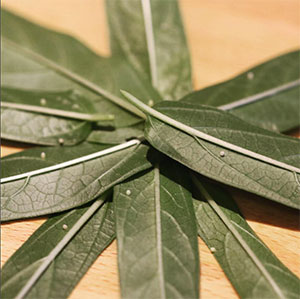Resident Caterpillars Aid in Monarch Butterfly Conservation
We are excited to introduce you to our two monarch caterpillars on display, Logan and Pilsen! This fall, Veterinary Behavior at Illinois and Medical District Veterinary Clinic at Illinois are teaming up to promote the conservation of one of our favorite insects—the monarch butterfly.
 This captivating insect is not only a beautiful summer guest of Midwestern fields and gardens, it is also an international traveler. Every year several generations of monarchs will reproduce and live their two- to three-month lifespans in the Midwestern U.S. and Canada, and every fall the fifth generation will travel 1,500 miles south to Central Mexico. This migratory generation lives a total of eight to nine months and spends the winter in the pine forests of central Mexico, then travels back to the southern U.S. to reproduce and lay eggs. Their offspring then head further north and the cycle repeats.
This captivating insect is not only a beautiful summer guest of Midwestern fields and gardens, it is also an international traveler. Every year several generations of monarchs will reproduce and live their two- to three-month lifespans in the Midwestern U.S. and Canada, and every fall the fifth generation will travel 1,500 miles south to Central Mexico. This migratory generation lives a total of eight to nine months and spends the winter in the pine forests of central Mexico, then travels back to the southern U.S. to reproduce and lay eggs. Their offspring then head further north and the cycle repeats.
While adult monarch butterflies will feed off of various species of flowers, the monarch caterpillar will only eat one type of plant—the milkweed. Unfortunately, habitat loss due to development and agricultural practices in the U.S. has eliminated large tracts of milkweed and resulted in a decline in the monarch butterfly population. Compounding the problem, deforestation has destroyed several of the monarch’s overwintering sites in Mexico, so fewer butterflies make the journey back to the U.S. to reproduce each spring. Our Midwestern population of monarch butterflies is now severely threatened.
Fortunately, there are many ways we can all help the monarch butterflies:
 Plant the monarch’s host plant, the milkweed. The more milkweed available, the more monarchs will reach adulthood. There are several species of milkweed and attractive options for the home garden are the swamp milkweed, butterfly weed, and whorled milkweed.
Plant the monarch’s host plant, the milkweed. The more milkweed available, the more monarchs will reach adulthood. There are several species of milkweed and attractive options for the home garden are the swamp milkweed, butterfly weed, and whorled milkweed.- Plant nectar plants for adult monarch caterpillars. They need plenty of nectar to reproduce and make their long journey south. Favorites of monarchs include Echinacea, Liatris, and Solidago (Goldenrod).
- Collect and raise monarch caterpillars indoors. While only 1 in 10 eggs will survive to adulthood outdoors due to predation, 9 in 10 eggs raised indoors will survive to adulthood. To successfully raise monarch caterpillars you will need plenty of milkweed, as these caterpillars are hungry! Monarch Watch offers excellent tips to help you get started rearing monarchs.
If you would like to learn more or are interested in visiting our caterpillars, Logan and Pilsen, please stop by our clinic.
Kelly Ballantyne, DVM, DACVB
Veterinary Behavior at Illinois

